
Posts Tagged: Asclepias fascicularis
Monarch Photography Display Graces Bohart Museum Hallway
Just before you enter the Bohart Museum of Entomology (located in Room 1124 of the Academic Surge Building at 455 Crocker Lane, UC Davis campus), the hallway display of monarch butterfly images will grab your attention. In stunning images, the Bohart Museum display depicts the...
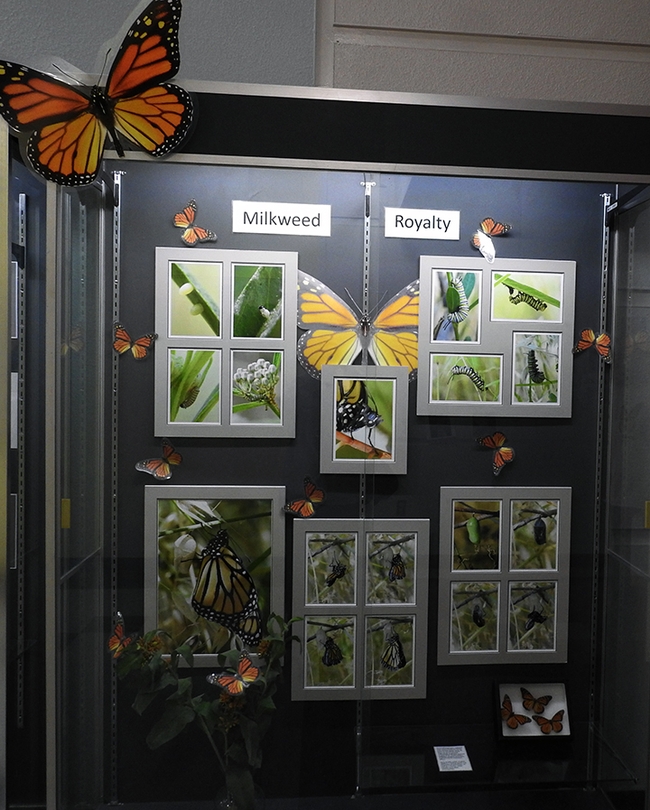
Larry Snyder's monarch photography display in the hallway opposite the entrance to the Bohart Museum of Entomology, Academic Surge Building.
A Good News Day: Monarchs on the UC Davis Campus
Butterfly guru Art Shapiro, UC Davis distinguished professor of evolution and ecology, has been looking for monarchs all year long on the UC Davis campus--as have scores of others. On Friday, Aug. 26, he met with success. He spotted four within half an hour. It all began with his stroll through...
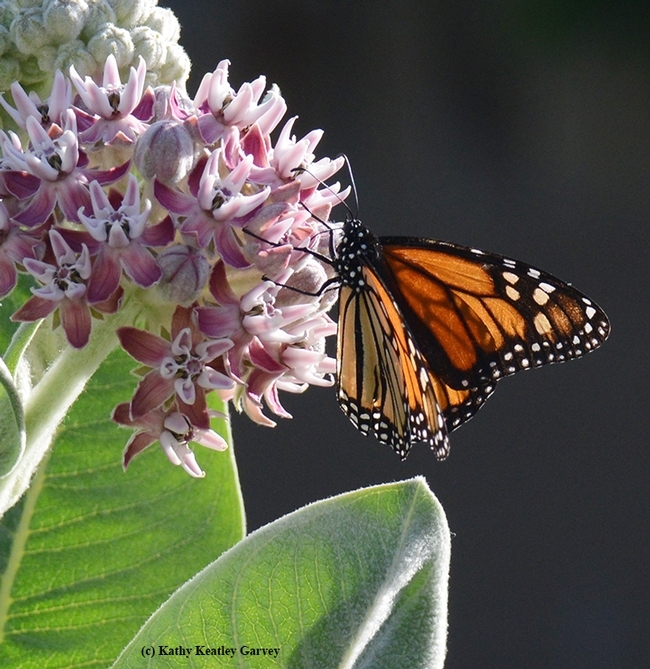
A monarch butterfly nectaring on a showy milkweed, Asclepias speciosa, in Vacaville, California in June, 2016. (Photo by Kathy Keatley Garvey)
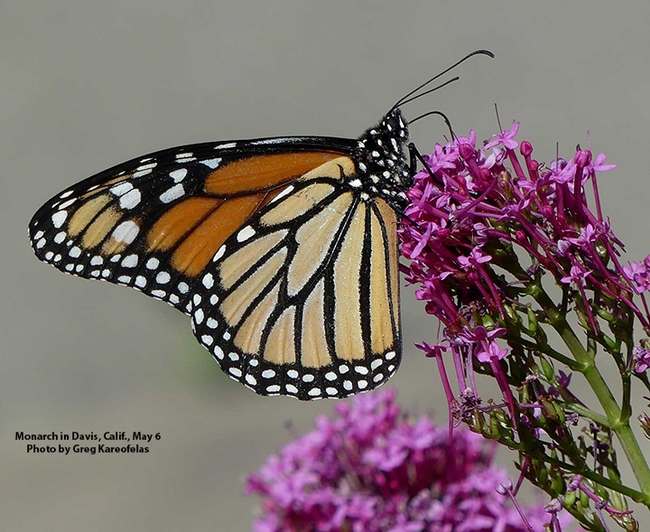
Bohart Museum of Entomology associate Greg Karoefelas took this image of a monarch in his backyard in Davis on May 6, 2022. (Photo courtesy of Greg Kareofelas)
Ever See a Leafcutter Bee Sunning Itself on a Milkweed Leaf?
Well, that's something you don't see every day: a leafcutter bee sunning itself on a milkweed leaf. The narrowleafed milkweed, Asclepias fascicularis, beckons monarch butterflies (the host plant), aphids, praying mantids and assorted other insects, but once in a while, you'll...
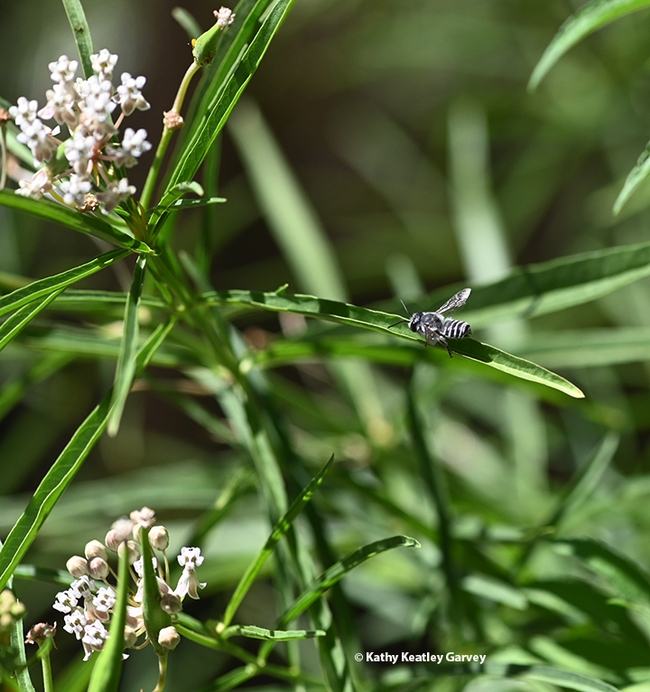
A leafcutter bee, Megachile spp., rests on a leaf of milkweed, Asclepias fascicularis, in a Vacaville, Calif. garden. Both are natives. (Photo by Kathy Keatley Garvey)
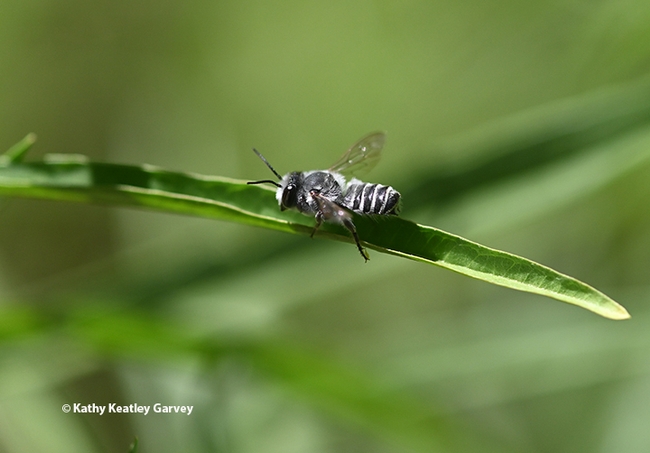
The leaf is long and the leafcutter bee is short. Leafcutter bees are smaller than honey bees. (Photo by Kathy Keatley Garvey)
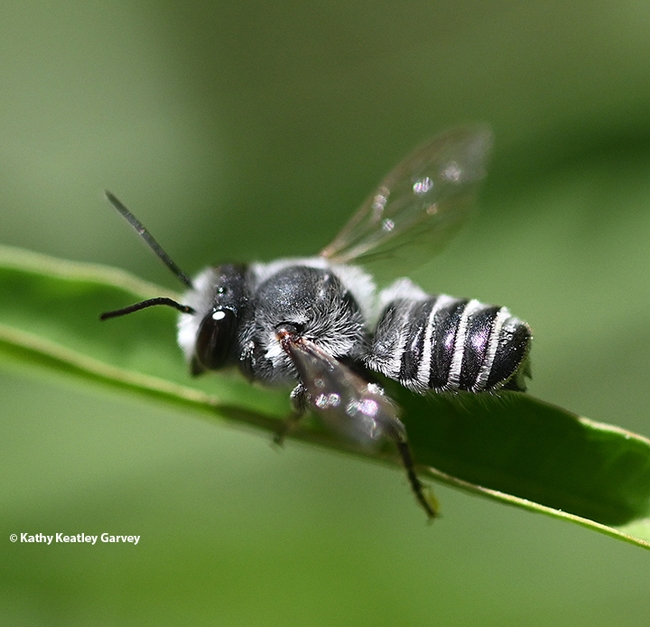
Close-up of the male leafcutter bee. (Photo by Kathy Keatley Garvey)
Walda: a Master of Disguise, Stealth and Ambush
Where's Waldo? If you've ever looked at a “Where's Waldo” pictorial book and tried to spot a cartoon-like character wearing a red-and-white striped shirt, a bobbie hat, and glasses, you know it's not that easy. Many look-alikes or red herrings populate each...
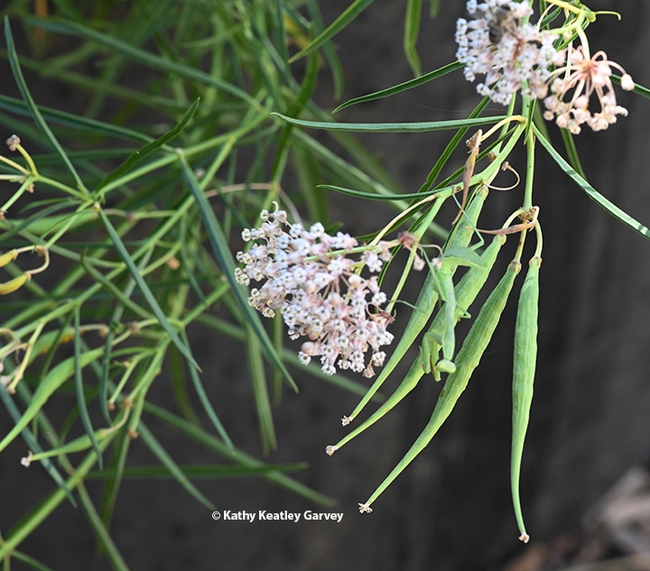
A praying mantis is camouflaged amid the green stems, seed pods and leaves of a native milkweed as she awaits prey. (Photo by Kathy Keatley Garvey)
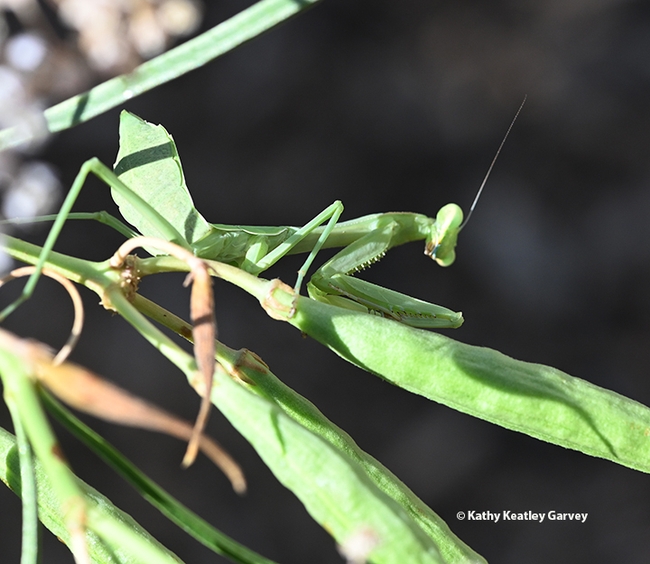
Well, no prey in sight, so I guess I'll just wait. (Photo by Kathy Keatley Garvey)
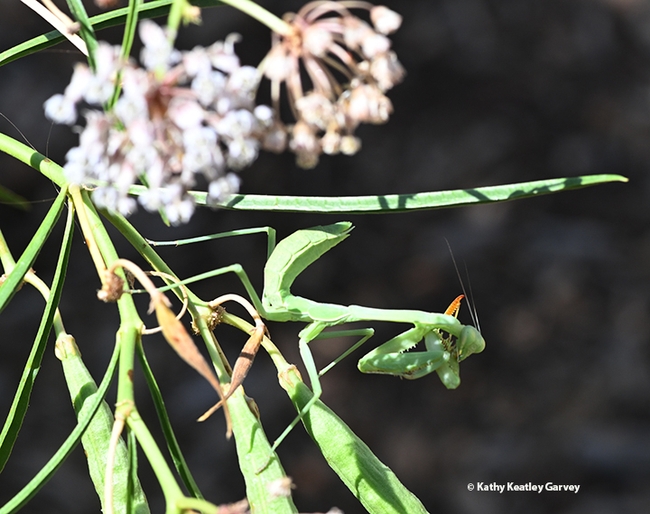
While I wait, I may as well groom myself. (Photo by Kathy Keatley Garvey)
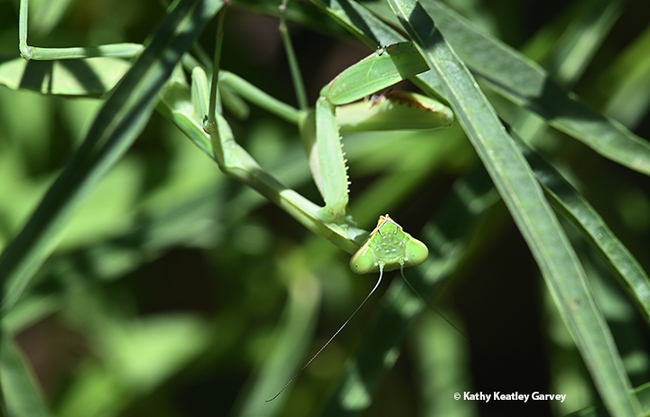
I see you! You don't look like prey. (Photo by Kathy Keatley Garvey)
Becoming a Lady Beetle, aka Ladybug, on Labor Day
If you're an entomologist, an agriculturist, a gardener or an insect enthusiast, you've probably seen the life cycle of a lady beetle, aka ladybug: from the egg to the larva to the pupa to the adult. You may have missed the pupal stage when the adult emerges--or mistaken the pupal case...
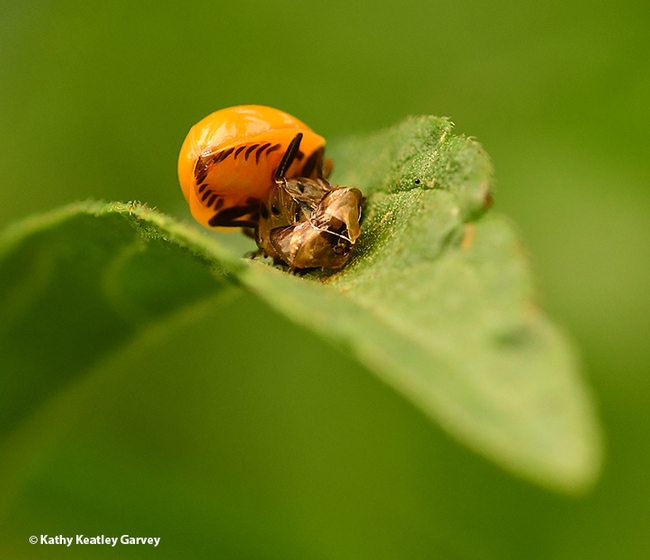
Welcome to the world! A lady beetle, aka ladybug, emerges from its pupal case. (Photo by Kathy Keatley Garvey)
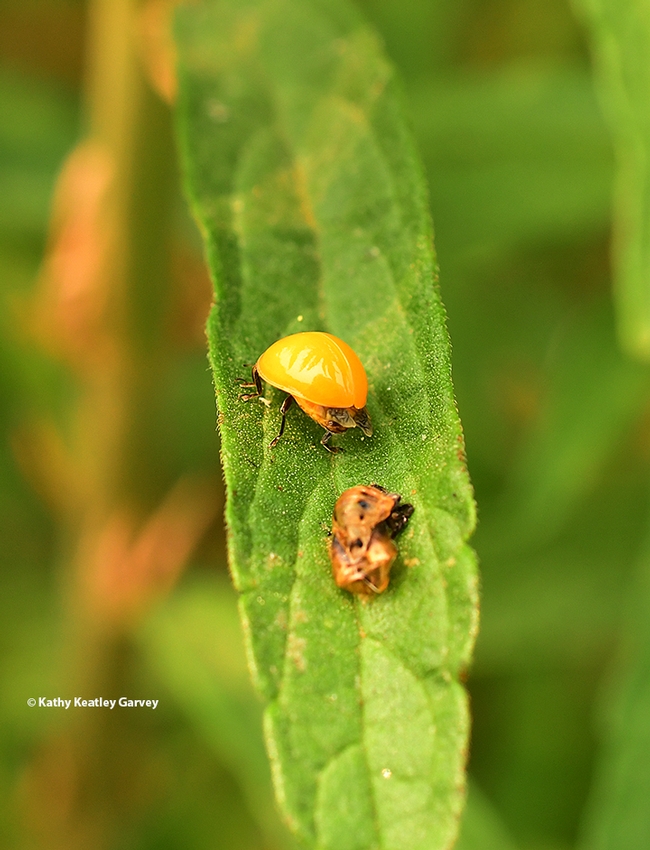
The lady beetle, aka ladybug, heads up the leaf, leaving its pupal case behind. (Photo by Kathy Keatley Garvey)
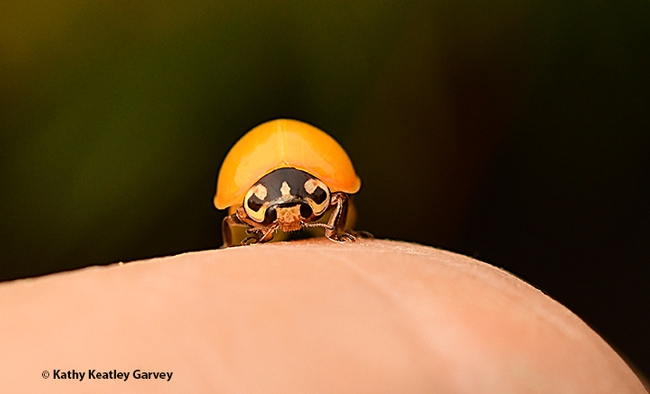
A newly emerged lady beetle, aka ladybug, peers at the photographer. (Photo by Kathy Keatley Garvey)
